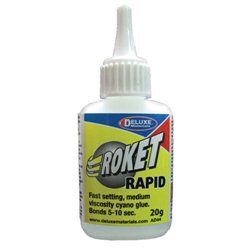There is no need to replace the bottle, it is more than likely a build-up of dry glue inside the nozzle. This is a...
No products
Product successfully added to your shopping cart
There are 0 items in your cart. There is 1 item in your cart.
Search Tips
Christmas and New Year
We are dispatching orders every weekday apart from Christmas Day, Boxing Day and New Year's Day.
If you order is time critical, select next day delivery at checkout.
The shop in Sandown is closed from 25th December, reopening on 30th December.
What are the best adhesives to use with photo-etch parts?
There has been a trend in recent years for plastic kit manufacturers to create what are sometimes called 'multi-media' kits. These generally include a mix of part types including standard injection moulded plastic, resin, photo-etch and sometimes acetate transparencies. Injection moulded parts are not inherently strong and so many manufacturers may well make small parts or fine details with resin which is stronger. Due to issues of scale, even resin can create disproportionate sizes of parts and so many kits and after-market part suppliers use photo-etch (PE) parts.
Photo-etch parts are made from metal and as such the adhesives used for the assembly of normal plastic parts may be ineffective. As such when using PE parts modellers will inevitably be looking for alternate adhesive options.
One of the most effective options for securing PE parts is cyanoacrylate or CA glue. This is effectively a form of superglue than is very effective in offering a strong bond. Many modellers will use CA glue especially when a quick bond is required as the glue generally cures very quickly.
Due to its quick cure time CA may not necessarily be the most appropriate medium, especially where longer cure times would be desirable, or for the construction of more elaborate or complicated assemblies. In this case modellers may choose to use PVA or white glue. It will go tacky very quickly but will not cure instantly, it therefore allows a modeller time and scope for precise alignment and fitting.
Click here to receive the tips weekly in your mailbox. You can unsubscribe at any time.










